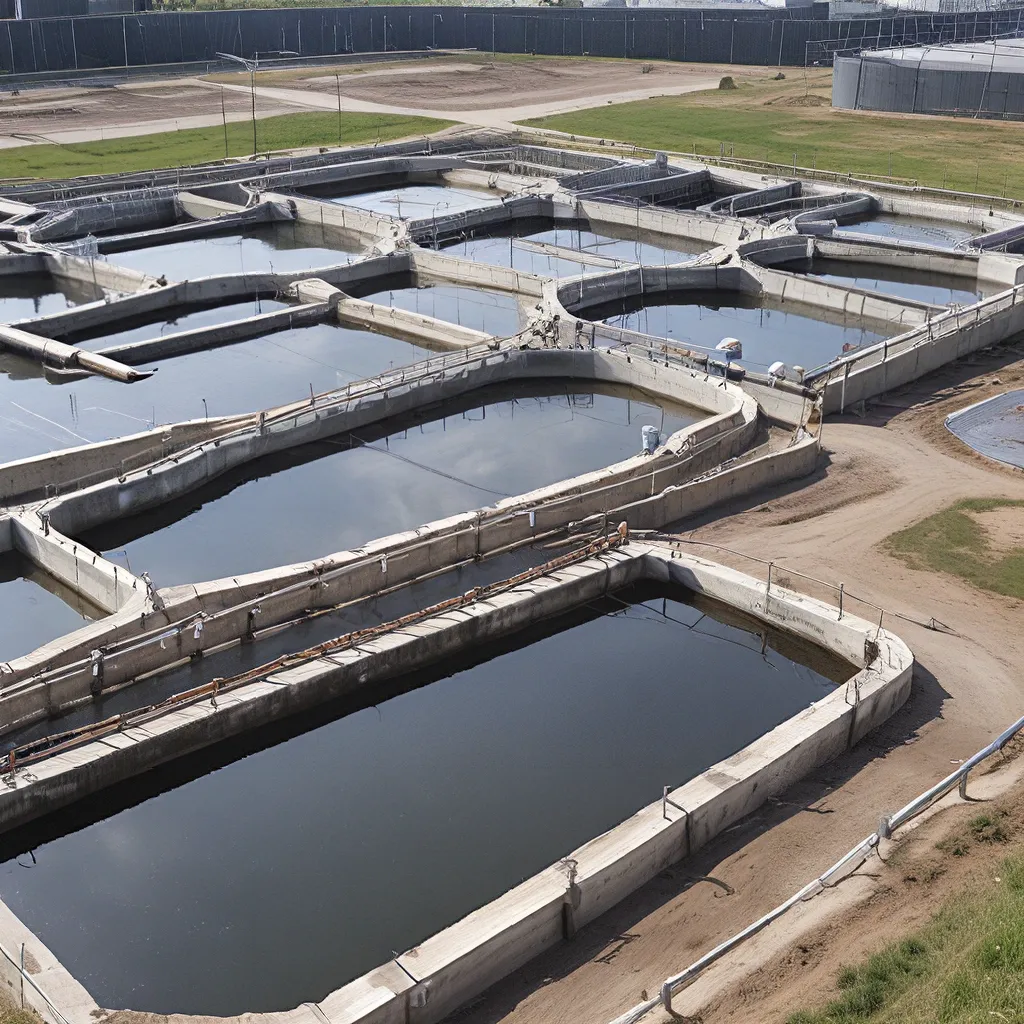
As someone who has always been fascinated by the inner workings of our water systems, I’ve been keeping a close eye on the rapidly evolving world of electrochemical wastewater treatment. This cutting-edge technology, known as Electrochemical Advanced Oxidation Processes (EAOPs), has been quietly revolutionizing the way we approach water purification. And let me tell you, it’s anything but boring!
The Rise of Electrochemical Processes
Back in the day, traditional wastewater treatment methods were pretty straightforward – you had your physical filtration, your chemical treatments, and your good old biological processes. But as our world has become more complex, with a growing array of emerging contaminants like pharmaceuticals, personal care products, and industrial chemicals, those old-school approaches just weren’t cutting it anymore.
That’s where EAOPs come in. These electrochemical processes harness the power of hydroxyl radicals – those highly reactive little buggers – to break down all sorts of organic pollutants. And the best part? They can do it without the need for extra chemicals or complicated pretreatment steps.
Researchers have been validating the effectiveness of EAOPs at both the bench-scale and pilot-scale, thanks to the development of some pretty amazing electrode materials. We’re talking about things like boron-doped diamond (BDD), doped-SnO2, PbO2, and even substoichiometric- and doped-TiO2. These materials can generate those hydroxyl radicals like crazy, making them super efficient at targeting all sorts of organic contaminants.
The Inner Workings of EAOPs
But how exactly do these electrochemical processes work their magic? Well, it’s a bit of a dance, but let me break it down for you.
The basic idea is that you’ve got your wastewater, right? And in that wastewater, you’ve got all kinds of organic compounds – the good, the bad, and the downright ugly. When you apply an electrical current to the water, it triggers a series of oxidation reactions at the electrode surface. These reactions generate those hydroxyl radicals I mentioned earlier, which are like the superheroes of the wastewater treatment world.
These radicals are so reactive that they can basically attack and break down almost any organic compound they come across. They do this by abstracting hydrogen atoms from the compound’s molecular structure, which starts a chain reaction that ultimately leads to the complete mineralization of the pollutant.
It’s a pretty impressive process, and researchers have been studying the specific oxidation pathways for all sorts of different contaminant classes, from pharmaceuticals and personal care products to industrial chemicals and pesticides.
Challenges and Limitations
Of course, as with any new technology, there are a few challenges that the EAOP folks are still working to overcome. One of the big ones is the potential for the formation of toxic byproducts, like perchlorate (ClO4-) or halogenated organic compounds. These can be a real headache, and researchers are constantly exploring ways to minimize their production.
Another issue is the low electro-active surface area of some electrode materials, which can limit the overall efficiency of the process. But the good news is that scientists are constantly developing new and improved electrode designs to tackle this problem.
One researcher, Dr. Brian Chaplin from the University of Illinois at Chicago, has been at the forefront of EAOP research, and he’s been sounding the alarm on these challenges. But he’s also optimistic about the future, noting that addressing these issues is crucial for EAOPs to reach their full potential in water treatment.
The Future of Electrochemical Wastewater Treatment
So, where do we go from here? Well, the future of electrochemical wastewater treatment is looking pretty bright, if you ask me. As researchers continue to delve deeper into the mechanisms behind these processes and explore new electrode materials, I suspect we’re going to see some really exciting developments.
Perhaps we’ll find ways to minimize the formation of toxic byproducts, or discover electrode designs that can boost the electro-active surface area and improve overall efficiency. Who knows, maybe we’ll even see some integrated EAOP systems that can tackle a wider range of contaminants in a single treatment process.
And the best part? Services like those offered by Alpha Wastewater are already starting to incorporate these cutting-edge electrochemical technologies into their treatment solutions. So, if you’re in the market for some seriously advanced wastewater purification, be sure to check them out.
At the end of the day, I can’t help but be impressed by the ingenuity and innovation happening in the world of electrochemical wastewater treatment. It’s a field that’s constantly evolving, with researchers pushing the boundaries of what’s possible. And who knows, maybe one day, we’ll all be sipping on hydroxyl-radical-infused water – the freshest, cleanest stuff around!